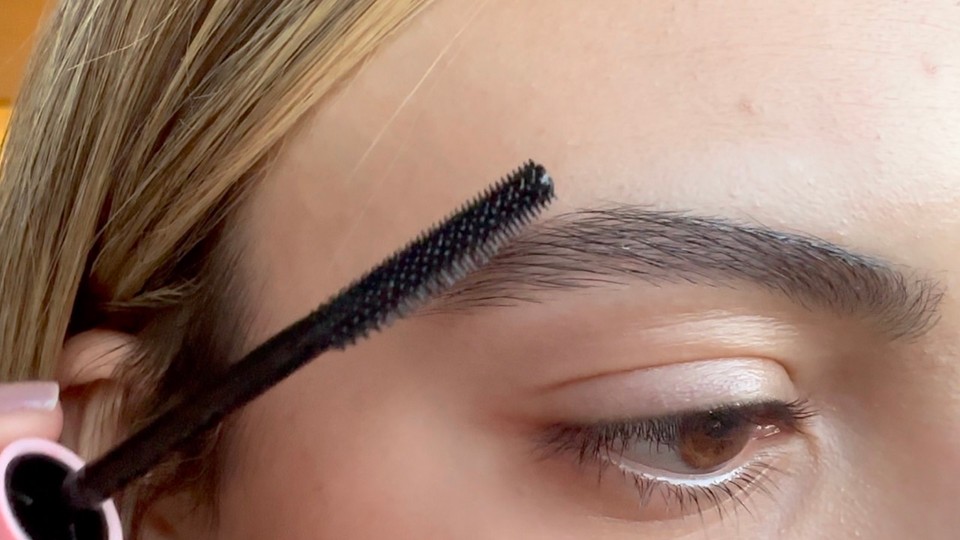Eyebrows Fixing Gel
| Phase | Ingredient | Percent (%) | Weight (g) |
|---|---|---|---|
| Phase A | Distilled water | 56.7 | 56.7 |
| Allantoin | 0.3 | 0.3 | |
| Glycerin | 1.0 | 1 | |
| Xanthan gum | 0.5 | 0.5 | |
| Phase B | Propanediol | 2.3 | 2.3 |
| Plant-based Pentylene Glycol (INCI - Pentylene Glycol) | 1.0 | 1 | |
| Carbomer | 0.5 | 0.5 | |
| Alcohol/ethanol (pure 96%) | 30.0 | 30 | |
| Sorbitol | 1.0 | 1 | |
| Panthenol | 1.0 | 1 | |
| Hydrolyzed Keratin | 1.0 | 1 | |
| Green tea extract | 1.0 | 1 | |
| Hydrolyzed Wheat Protein | 2.0 | 2 | |
| Disodium EDTA | 0.2 | 0.2 | |
| Citric acid | 0.7 | 0.7 | |
| Cosgarg | 0.8 | 0.8 |
You can help support my website and channel through the “buy me a coffee” page.
Here is the link: https://www.buymeacoffee.com/diycosmetica
Your support helps me keep sharing here more information and more formulas.
For more face products, check the Creamy Highlighter Bronzer, the Chamomile Cleansing Balm and the Cheeks And Lips Tint.
This formula is for a lightweight, transparent eyebrow gel that provides long-lasting hold while nourishing and enhancing the appearance of your brows. It's clear so that it can complement all brow colors. This brow gel is designed to keep the brows in place without a stiff or crunchy feel and to promote healthier brows by hydrating them and shooting the skin.
To use this gel:
- Prep Your Brows: Clean your face to ensure no oil, makeup, or residue interferes with the gel’s performance.
- Application: Use a small brow brush to apply the gel. Comb through your brows using short, upward strokes, shaping them as desired. Aim for 5–6 strokes per brow for a voluminous, lifted effect.
- Final Touch: Let the gel dry completely. Use it as the last step in your brow routine to lock in the color or as a standalone product to keep brows neat and groomed.
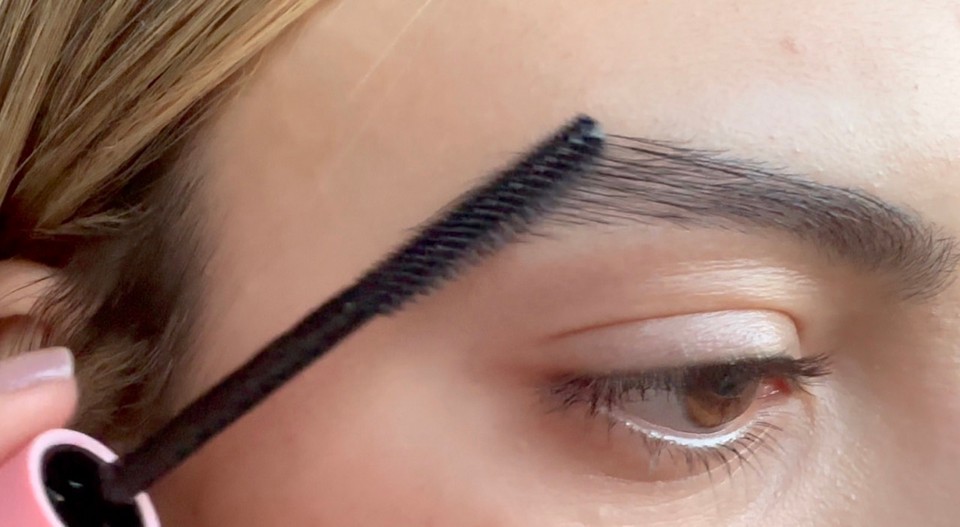
Let's go over the ingredients in this formula and alternatives you can use for the ingredients I used in this formula; when you replace ingredients, it is recommended to make a small batch to test the stability and final texture of your product. I recommend making 50g or less when you make changes to the original formula. In the formula, you can use the calculator to adjust the amount you wish to make.
Allantoin is a naturally occurring compound found in plants like comfrey and chamomile, though it is often synthetically produced for cosmetics. It is a skin-conditioning agent that soothes and protects the delicate skin beneath the brows. Allantoin promotes cell regeneration, especially for those with sensitive or irritated skin. It helps to reduce redness and irritation, ensuring your brows and surrounding skin remain healthy and hydrated. By soothing the skin, it also creates a smooth surface for better gel application. You can replace it with Aloe Vera extract or Chamomile extract, if you use these extracts instead of Allantoin, add them in phase B (the cool-down phase) and not in phase A.
Alcohol (pure 96%) acts as a quick-drying agent in the formula, ensuring the gel sets rapidly and leaves a lightweight, non-sticky finish. Alcohol also contributes antimicrobial properties to enhance the product’s stability. Alcohol keeps the gel lightweight while providing a long-lasting hold. It ensures that the product dries quickly and does not smudge or transfer. This is the same alcohol I used to make the spray deodorant.
In this formula for a gel and thickening agents, I combined two ingredients (Xanthan gum and Carbomer).
Xanthan gum is a polysaccharide produced through the fermentation of sugars by the Xanthomonas campestris bacteria. It acts as a thickening agent, giving the gel its smooth consistency and helping it adhere evenly to brow hairs. Xanthan gum creates a lightweight gel texture, ensuring the formula spreads easily without clumping. It also provides a slight hold to support brow styling. In this formula, I combined xanthan gum and Carbomer since Carbomer is generally less sticky than xanthan gum, and if I use xanthan gum at 1%, the product will be more sticky. Some brands use Ceteareth-30 as the gelling and thickening agent for a brows's gel (It's a non-ionic emulsifier and stabilizer with thickening properties, usually used in a range of 0.5% to 3%).
Carbomer is a synthetic polymer made from acrylic acid, commonly used in gels and creams. It stabilizes and thickens the formula, enhancing the gel's viscosity and improving its spreadability. Carbomer ensures the gel has a smooth texture and stays in place after application, contributing to a polished and professional finish. You can use Hydroxyethylcellulose instead (a plant-based polymer with similar thickening properties). If you don't want to combine xanthan gum and Carbomer, you can use only one of those if you prefer, a total of 1%. If you want a more natural product, use xanthan gum (1%) or a combination of xanthan gum 0.5% with Hydroxyethylcellulose 0.5% (Hydroxyethylcellulose (HEC) is not entirely natural, but it is derived from a natural source). You can play with the percentages you use and the combination to achieve the perfect consistency that works for you, but always maintain the total of 1% for the gelling agent.
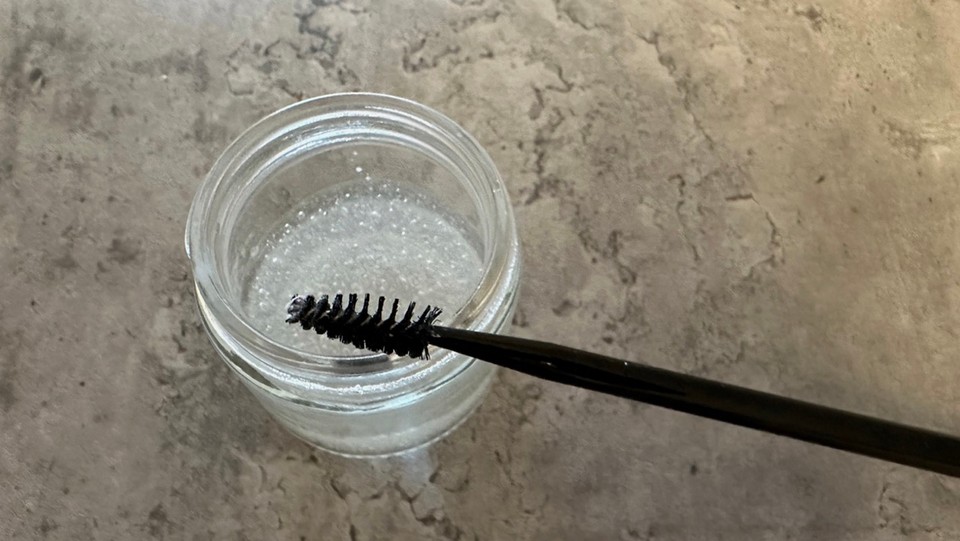
For hydration, I use several ingredients such as humectants and Hydrolyzed keratin; I give you alternatives for these ingredients and explanations why they are used in this formula:
Sorbitol is a sugar alcohol derived from fruits like apples and pears or synthesized from glucose. It's a humectant, drawing moisture into the formula to keep it hydrated and smooth. Sorbitol helps to prevent the gel from drying out over time, ensuring it remains easy to apply. It also contributes to a hydrating effect for both brow hairs and the skin underneath. You can swap the sorbitol with trehalose. If you use trehalose, you can add it to phase A and heat it to dissolve in the distilled water.
Panthenol, also known as pro-vitamin B5, is derived from plant or animal sources. It strengthens and conditions the brow hairs, enhancing their elasticity and overall health. Panthenol nourishes the brows, reducing breakage and promoting a healthy, shiny appearance. It also soothes the skin beneath the brows, making it a dual-purpose ingredient. You can replace it with Biotin (Vitamin B7), which also supports hair health and growth.
Propanediol is a plant-derived glycol, often sourced from corn sugar fermentation. It improves the gel's texture and acts as a humectant, drawing moisture to the skin and hair. Propanediol helps to create a smooth, non-greasy formula while keeping the brows hydrated and conditioned. You can use Butylene Glycol instead.
Plant-based Pentylene Glycol is a multifunctional ingredient with antimicrobial properties, perfect for transparent cosmetic formulations. This clear, nearly scentless liquid is highly versatile and suitable for both cold and hot processing methods. Pentylene Glycol is a powerful hydrator that helps prevent the growth of microorganisms. It locks in moisture similarly to glycerin or hyaluronic acid, ensuring the skin stays moisturized without drying effects. Its hydrating properties also help smooth fine lines and wrinkles. You can use Propanediol instead.
Hydrolyzed wheat protein is derived from wheat gluten and broken down into smaller protein fragments for cosmetic use. It strengthens and hydrates the brow hairs, improving their elasticity and shine. It adds volume and thickness to the brows while enhancing their overall health. To replace it, you can use Rice protein or Soy protein.
Hydrolyzed keratin is derived from natural keratin protein, often sourced from wool, feathers, or hair. It strengthens the brow hairs by penetrating the hair shaft and repairing damage. This protein enhances the structure of brow hairs, making them appear thicker, healthier, and more resilient to breakage. You can replace it with silk protein, which provides similar strengthening and smoothing benefits. You can also swap it with Hydrolyzed Collagen, Hydrolyzed Pea Protein or Keratin Amino Acids.
Here is a table with the alternatives (for Hydrolyzed wheat protein and Hydrolyzed keratin), which will give you more information and help you choose one of these ingredients:
| Ingredient | Plant-Based | Strengthens Hair | Adds Shine | Hydrates Hair | Suitable for Vegan Formulations |
|---|---|---|---|---|---|
| Hydrolyzed Wheat Protein | Yes | Yes | Moderate | Yes | Yes |
| Hydrolyzed Keratin | No | Yes | High | Moderate | No |
| Hydrolyzed Silk Protein | No | Yes | High | Yes | No |
| Hydrolyzed Collagen | No | Yes | Moderate | Yes | No |
| Hydrolyzed Rice Protein | Yes | Yes | Moderate | Yes | Yes |
| Keratin Amino Acids | No | Yes | Moderate | Yes | No |
| Hydrolyzed Pea Protein | Yes | Yes | Moderate | Yes | Yes |
For Plant-Based Formulas: Use Hydrolyzed Wheat Protein, Rice Protein, or Pea Protein for their conditioning and strengthening properties. For Maximum Shine and Smoothness: Choose Hydrolyzed Silk Protein, Hydrolyzed Keratin or Collagen. For Deep Repair: Choose Keratin Amino Acids for their ability to penetrate deeply into the hair structure.
Green Tea Extract is derived from the leaves of the Camellia sinensis plant. It is an antioxidant that protects brow hairs and skin from environmental damage. Green tea extract soothes the skin, reduces inflammation, and promotes a healthy environment for brow hair growth. You can use Rosemary extract or Cucumber extract instead.
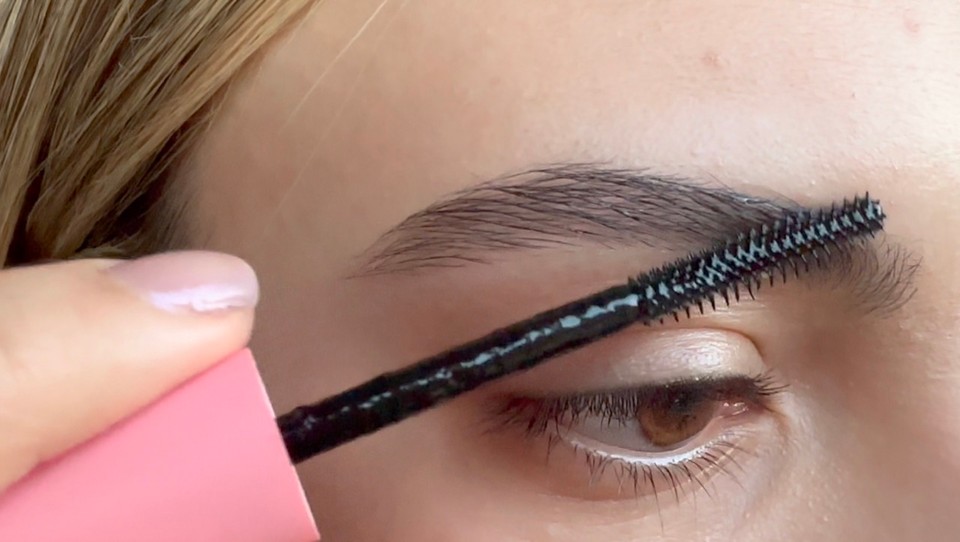
Disodium EDTA is a synthetic compound derived from ethylenediamine. It acts as a chelating agent, binding to metal ions to enhance the product's stability and shelf life. You can use Sodium Glutamate instead. If you use Sodium Glutamate, use 0.4% instead of 0.2% and reduce the difference by 0.2% from the distilled water (for 100g total of 0.4g Sodium Glutamate and 56.5g distilled water). If you don't have any of these chelating agents, skip it and add 0.2% to the distilled water (for a total of 56.9 g of distilled water per 100 g).
A quick note on Chelating agents: they are essential ingredients in many skincare formulations, including face creams. Their primary role is to bind and neutralize metal ions, such as iron, calcium, and magnesium, which can be present in both the water and raw materials used in the formulation. These metal ions can have several negative effects on the stability and efficacy of the product. Metal ions can catalyze oxidative reactions, leading to the degradation of active ingredients, such as antioxidants, vitamins, and oils. Chelating agents bind to these metals, preventing them from destabilizing the formula and extending the product's shelf life. Chelating agents can enhance the effectiveness of preservatives by preventing metal ions from interfering with their activity. Without chelating agents, metal ions can cause the product to discolor, develop an unpleasant odor, or separate, leading to a compromised product that may be less effective or aesthetically pleasing.
When you make DIY skin care products and cannot find a chelating agent to add to your products, there are a few actions you can take to help maintain the stability and quality of your formulation:
Always use distilled water (Distilled water is free of impurities, including metals).
Choose high-quality, well-refined oils and ingredients that are less likely to contain metal contaminants.
Incorporate antioxidants like Vitamin E, Grapefruit extract or Green Tea extract into your formula. While they're not a direct replacement for a chelating agent, these antioxidants play a crucial role in slowing down the degradation process.
The formula may have a shorter shelf life without a chelating agent. Making smaller batches of the product ensures it is used up while still fresh and effective.In general, for DIY products, it is recommended to make small batches and use up the product after three months.
Protect the product from light, heat, and air exposure, which can accelerate the degradation of the formulation. Using airtight, dark-colored containers can help extend the product's shelf life.
Monitor the pH and visual appearance of the cream over time. If you notice any significant changes in color, smell, or texture, it may be a sign that the product is beginning to degrade.
Citric Acid is naturally derived from citrus fruits or synthesized for cosmetics. Balances the pH of the gel to ensure compatibility with the skin and improve product stability. Citric acid prevents irritation and ensures the formula remains gentle while extending its shelf life. You can use lactic acid instead, but at a lower percentage, use 0.3% lactic acid and add the remaining 0.4% to the propanediol. (For a total of 100g, use 0.3g lactic acid and 2.7g Propanediol).
I used Cosgard as the preservative. If you use another preservative, use it according to your supplier's instructions (if your chosen preservative should be 1%, reduce the 0.2% from the distilled water).

You can use a syringe to place the gel into a tube (with an applicator) or place it in a small jar and use a brow applicator to apply the gel on the brows.
The shelf life of your product depends on the shelf life of the ingredients you use and the period of time your preservative is effective. If your preservative is effective for 3 months and all your ingredients have a shelf life of more than 3 months - your product will be valid for 3 months. If your preservative is effective for 6 months and all the ingredients have more than 6 months shelf life, your product will be good for 6 months; if one ingredient has a shelf life of 4 months, then the shelf life of your product will be 4 months.
Method:
- Add glycerin and xanthan gum to a heat-resistant beaker to create a slurry, then add the distilled water and the allantoin. Cover the beaker with aluminium foil.

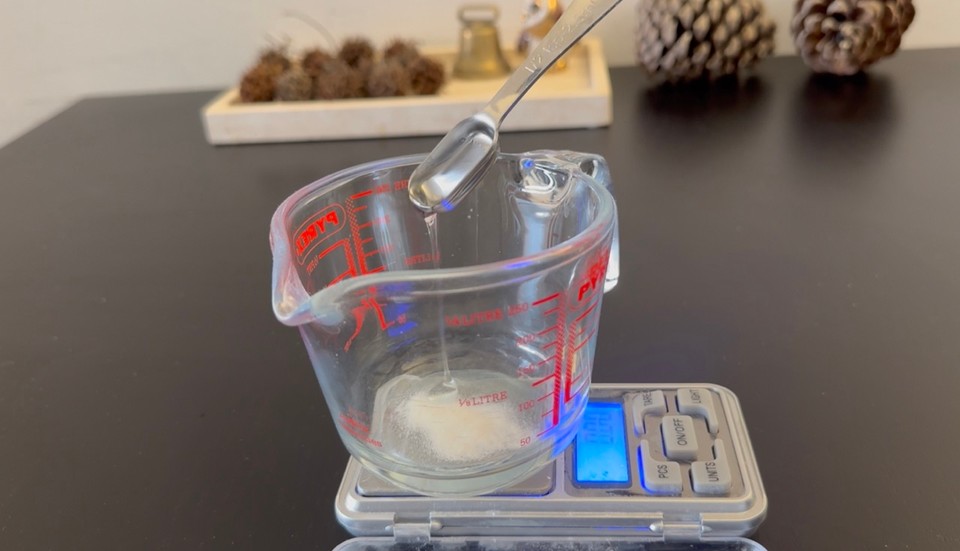
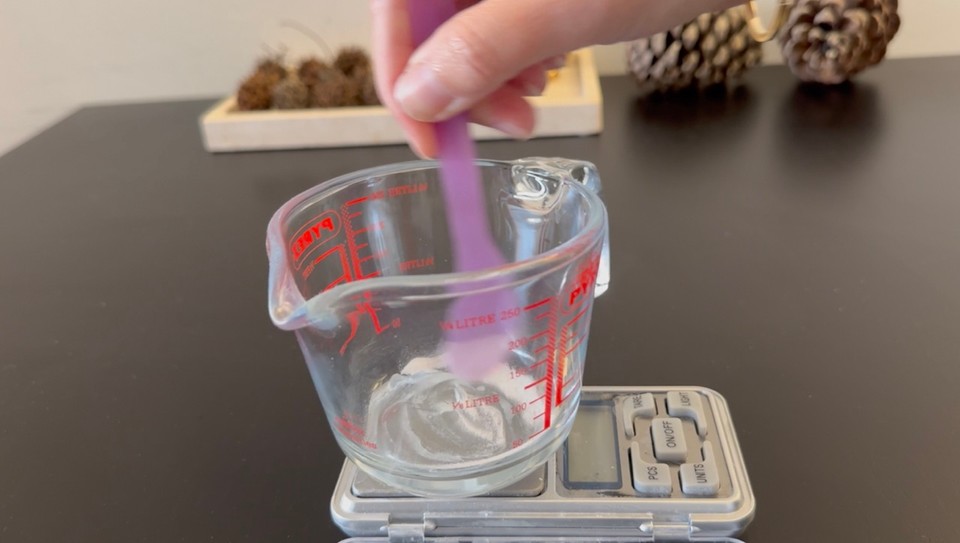



- Place the beaker with phase A into a double boiler on medium heat (55°C) for 20 minutes. After 19 minutes, remove the aluminium foil and check everything is dissolved and combined.


- Remove phase A from the heat and let it cool to room temperature.

- Let phase A cool down to room temperature (less than 30°C), then add the carbomer, the Propanediol and the plant-based Pentylene Glycol. Mix gently and let the carbomer hydrate into the mixture for 15-45 minutes.
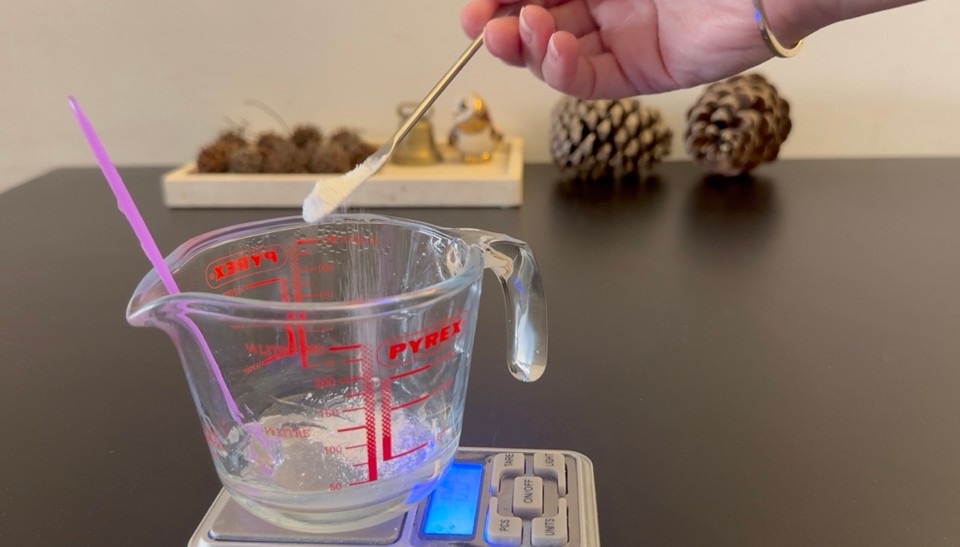

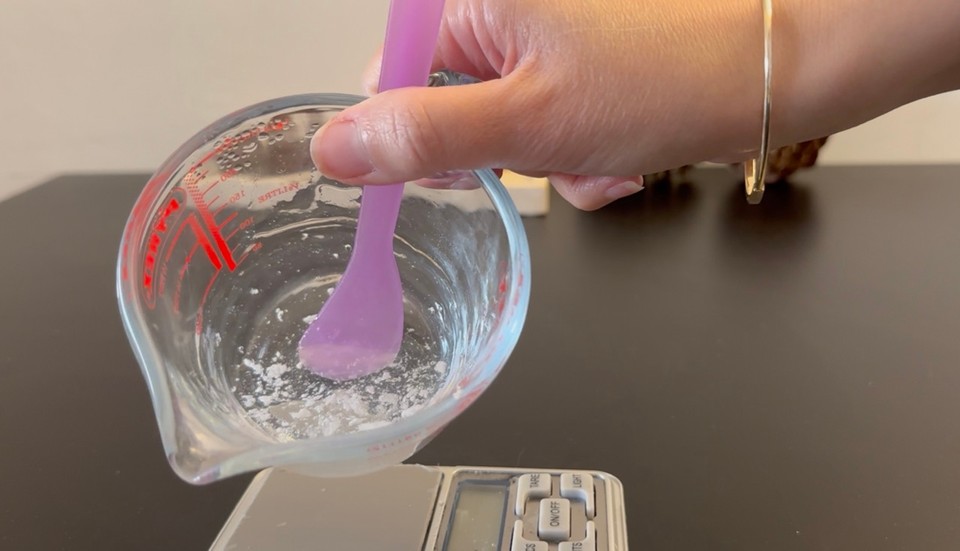




- Prepare the other ingredients from Phase B in a different container.





- When the carbomer is dispersed, you can add phase B into the beaker and mix everything. Mix with a milk frother to ensure everything is well combined. (In the video, I added the Disodium EDTA and the Citric acid at the end).

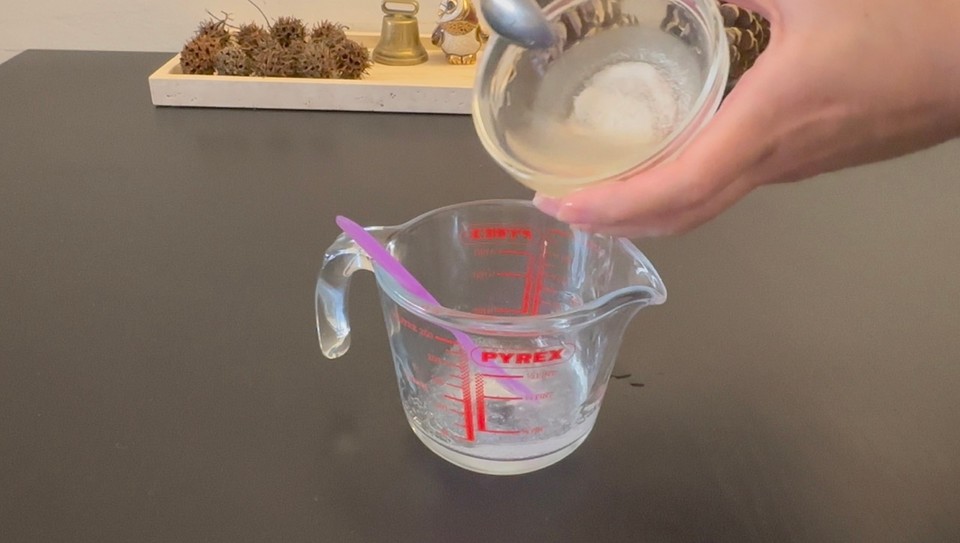

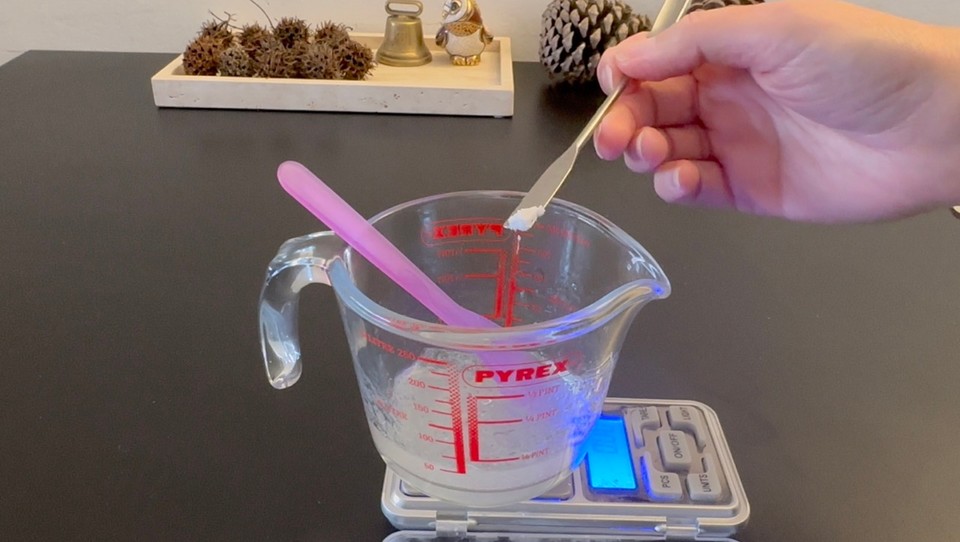



- Check and adjust the pH of the final product. The final pH should be 5.5-6.5. To read more about pH adjustments, check this post.

- Let the gel rest in the beaker for 6-8 hours, and then place it into a container.





